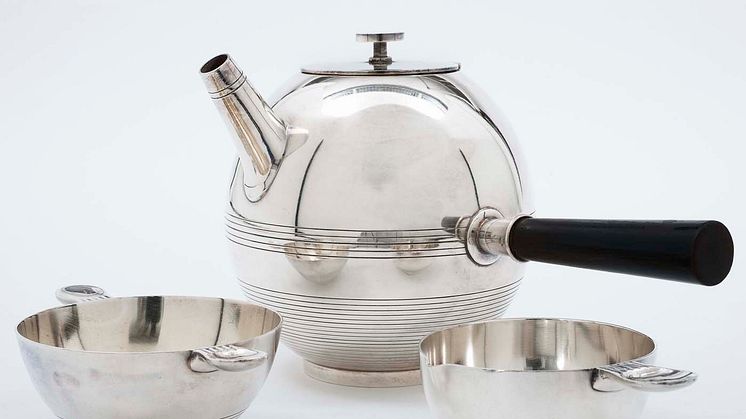
Press release -
Female Pioneers opens on Läckö Castle 13 June
This summer Female Pioneers will be on show at Läckö Castle. The exhibition is produced by Nationalmuseum and features works by female pioneers of applied art and design. Among them are well-known names such as Tyra Lundgren, Anna Petrus and Estrid Ericson, as well as lesser-known artists such as Wilhelmina Wendt, Kitty von Otter och Sylvia Stave.
On 13th of June the exhibition with the title Female Pioneers – Swedish Design Between the Wars opens at Läckö Castle. It features 143 works from Nationalmuseum’s collections in a wide range of materials including cast iron, glass and silver. Several of them have never been publicly exhibited before. Among the 19 artists and designers are well-known names such as Tyra Lundgren, Anna Petrus and Estrid Ericson, as well as lesser-known artists such as Wilhelmina Wendt, Kitty von Otter and Sylvia Stave. The exhibition is produced by Nationalmuseum in association with the Läckö Castle Foundation.
Swedish applied art and design enjoyed an upsurge in popularity between the two world wars. The interwar period is associated with Swedish Grace, an internationally recognized style, and with the beginnings of Functionalism. With a few exceptions, the role played by women in this period of inventive and colourful design has not previously been highlighted. Modernism emphasized the individual artistic genius, who almost invariably was male. A further reason why female applied artists remained in the background may be that a number of them worked for companies such as Svenskt Tenn and CG Hallberg, which wished to promote the company rather than individual artists. After the Second World War, a new generation of artists and designers rose to prominence and the older generation, male and female alike, was forgotten.
For a long time, Nationalmuseum considered itself an arbiter of taste, so there was little diversity in the pieces acquired for the museum’s collections. As recently as the 1980s, interesting pieces from the interwar period left Sweden because of greater knowledge and interest abroad. Over time, Nationalmuseum’s acquisition policy has evolved. In 2012, for instance, the museum launched a project to actively collect works by female design pioneers. The result can be seen in the exhibition.
Nationalmuseum receives no public funding for new acquisitions and relies on financial support from organizations such as the Barbro Osher Pro Suecia Foundation and the Friends of Nationalmuseum. The most significant acquisition on show this summer is a collection of works by Sylvia Stave. These pieces, produced during a short but intense period of the artist’s career, were purchased in 2013 from Rolf Walter, a design historian and devoted collector.
A catalogue has been published for the exhibition with texts written by Magnus Olausson, Christian Björk, Anders Bengtsson, Micael Ernstell and Jessica Kempe.
The exhibition Female Pioneers – Swedish Design Between the Wars is on show at Läckö Castle from 13 June until 23 Augusti 2015.
Press contact
Hanna Tottmar, press officer, hanna.tottmar@nationalmuseum.se, +46 767 23 46 32
Caption
Sylvia Stave, Coffee pot, sugar bowl and cream jug. Photo: Anna Danielsson/Nationalmuseum.
Nationalmuseum is Sweden’s premier museum of art and design. The collections comprise older paintings, sculpture, drawings and graphic art, and applied art and design up to the present day. The museum building is currently under renovation and scheduled to open again in 2018. In the meantime, the museum will continue its activities through collaborations both in Sweden and abroad as well as temporary exhibitions at the Royal Swedish Academy of Fine Arts, Fredsgatan 12 and Nationalmuseum Design at Kulturhuset Stadsteatern in Stockholm. Nationalmuseum collaborates with Svenska Dagbladet, FCB Fältman & Malmén and Grand Hôtel Stockholm. For more information visit www.nationalmuseum.se.

